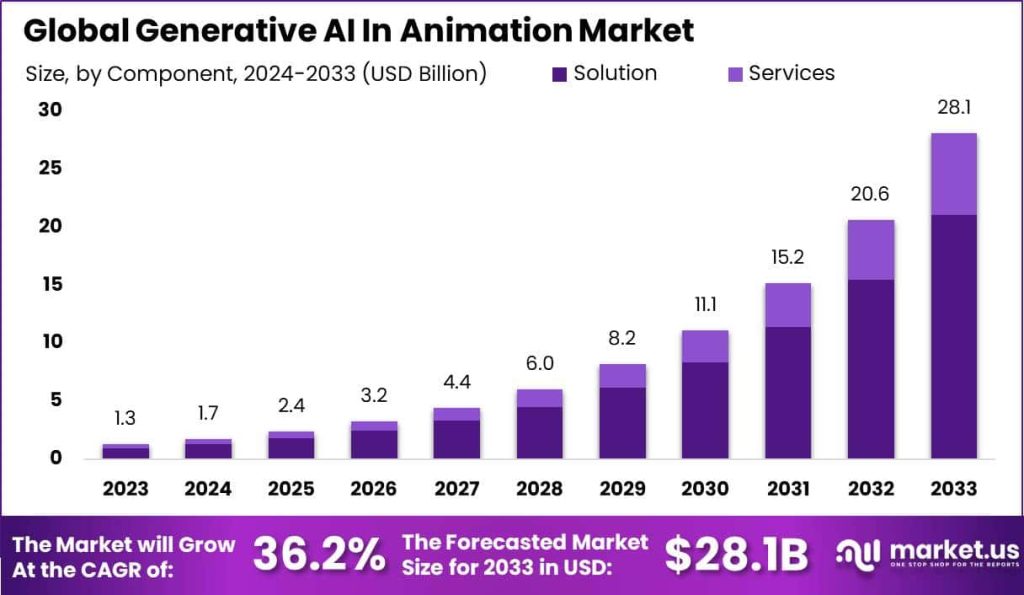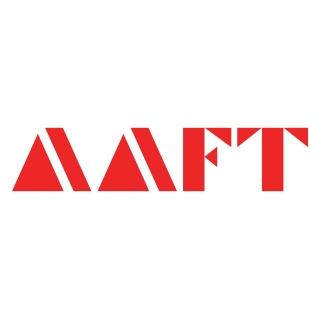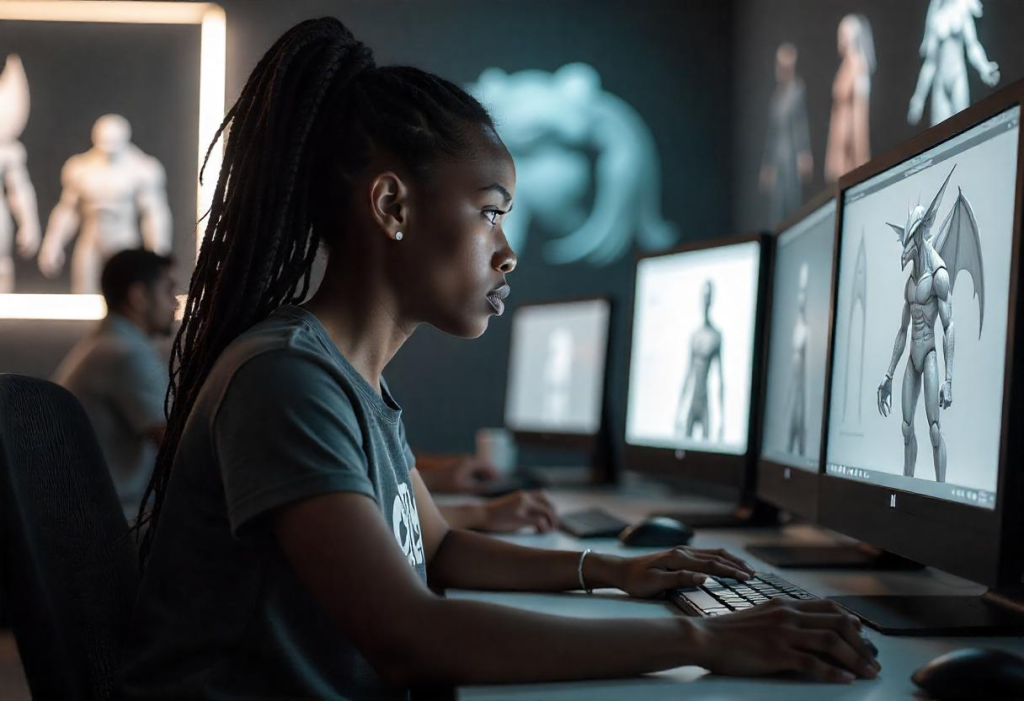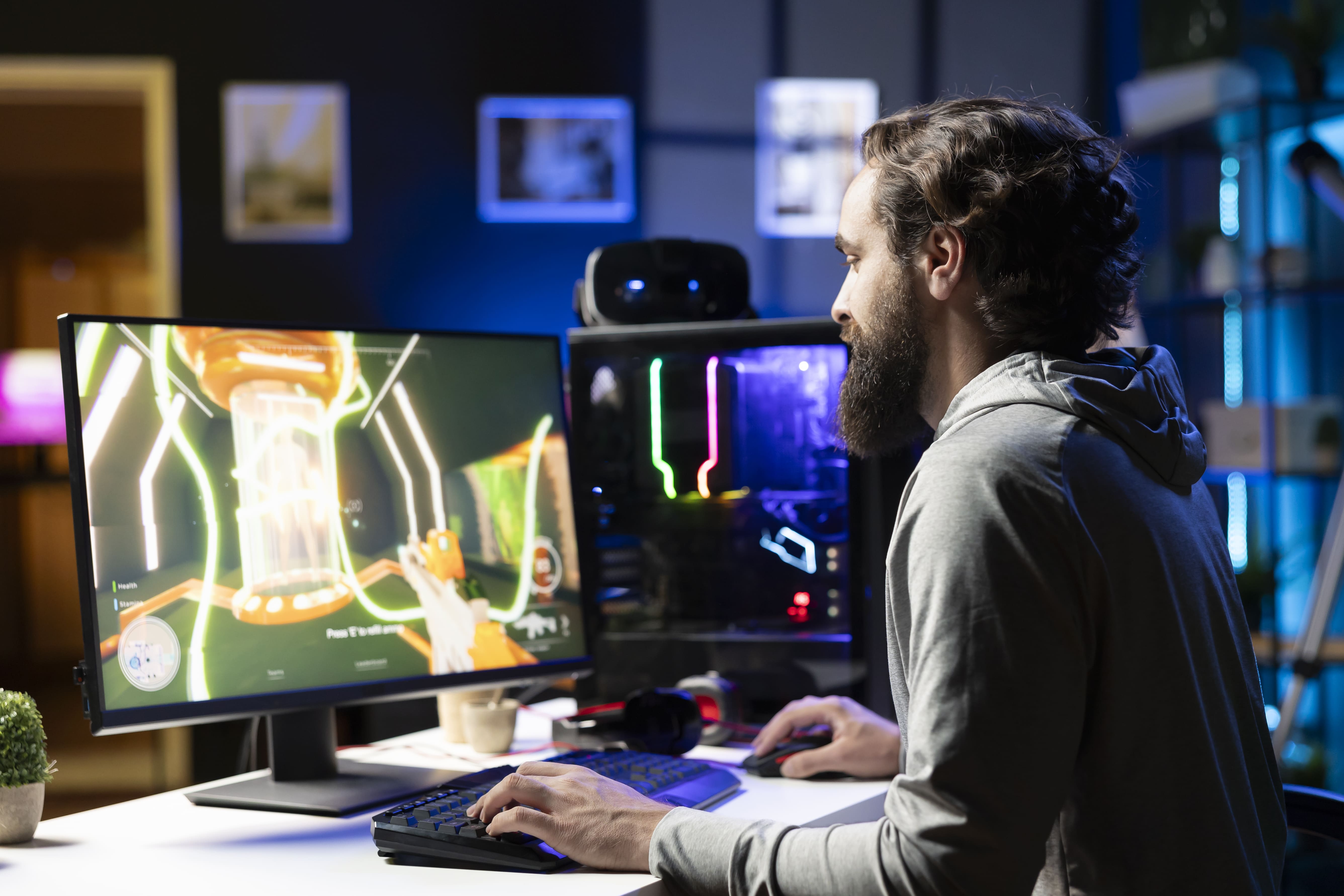Impact of AI On Animation And VFX Industry
The Animation and VFX world is evolving rapidly with the advancement of artificial intelligence. Tasks that once took several weeks can now be completed in hours—boosting both creativity as well as efficiency.
AI-powered tools are transforming everything today, ranging from Character Animation to Visual Effects. Moreover, as artificial intelligence continues to reshape the industry, Animation Courses are building professionals who have cutting-edge skills.
In this blog, we will decode the impact of AI on the Animation and VFX industry through Animation Courses, along with other valuable insights related to the trending topic. Let’s kick in!
Key AI Technologies In Animation and VFX
These technologies streamline workflows, reduce manual labor, and build new creative possibilities by leveraging data-driven approaches for streamlined animation and VFX production. Key areas of these impacts include:
1) Character Animation
Do you want free career counseling?
Ignite Your Ambitions- Seize the Opportunity for a Free Career Counseling Session.
- 30+ Years in Education
- 250+ Faculties
- 30K+ Alumni Network
- 10th in World Ranking
- 1000+ Celebrity
- 120+ Countries Students Enrolled
AI-driven animation tools analyze human motion data for smooth, lifelike character movement generation without requiring Animators to create keyframes for each frame manually. Today, Deep Learning (DL) models can easily predict realistic body dynamics, facial expressions, and even lip-sync movements—significantly reducing production time while improving realism and creativity.
2) Motion Capture Enhancement
AI refines motion capture data by automatically correcting errors, reducing noise, and filling in missing frames, resulting in cleaner and more accurate animations. Machine Learning (ML) models also enable automatic Retargeting of captured motions to different characters, allowing seamless adaptation of animations across various models.
3) Procedural Animation & Physics Simulations
Machine Learning facilitates Procedural Animation, where movements are generated dynamically based on predefined rules and physics-based simulations. This enhances the quality of Animation and VFX Courses, enabling more realistic effects such as:
Book Now →
- Hair And Cloth Simulation: AI-driven solvers ensure the natural movement of hair and fabrics.
- Crowd Simulation: AI helps animate large-scale crowd scenes with unique behaviors for each character.
- Particle Systems: Simulating natural elements like dust, fire, and smoke becomes more accurate and efficient with AI-driven procedural animation.
4) AI-Powered Scene and Environment Generation
AI automates the creation of 3D environments and landscapes, terrain, vegetation, and urban structures based on input parameters. These Deep Learning models can quickly generate photorealistic environments with accurate lighting, reflections, and atmospheric effects, reducing the background design’s time and effort.
5) AI-Assisted Visual Effects (VFX) Simulation
Machine learning algorithms enhance simulations of complex visual effects such as:
- Fluids (Water, Lava, Blood Splatter): AI improves real-time fluid dynamics.
- Fire, Smoke, and Explosions: Deep learning models replicate real-world physics for more convincing results.
- Destruction Simulations: AI-driven physics engines enhance shattering, breaking, and deformation effects.
By learning from footage and physics simulations in real-time, AI-generated VFX can be integrated easily into scenes, improving realism while minimizing manual effort.
Do you want free career counseling?
Ignite Your Ambitions- Seize the Opportunity for a Free Career Counseling Session.6) Rendering Optimization & Smart Upscaling
AI can efficiently perform rendering acceleration by optimizing lighting, shadows, textures, and reflections in real-time, reducing the computational load. Technologies such as artificial intelligence Denoising and Super-resolution Rendering boost image quality while reducing the time required to render. AI-powered tools like NVIDIA’s DLSS (Deep Learning Super Sampling) enhance visual fidelity without requiring high-end hardware.
7) Automated Asset Creation & Texture Generation
AI-powered tools simplify asset creation by automatically generating:
- 3D models: AI can build complex objects based on reference images or rough sketches.
- Textures & materials: AI generates realistic textures from images, reducing manual texturing work.
- Variations of existing assets: AI can create multiple design variations of objects, characters, or environments without manual intervention.
These capabilities significantly speed up the asset creation process and improve efficiency in large-scale productions.
8) AI in Post-Production & Compositing
AI assists in post-production by automating tasks such as:
- Video denoising & restoration: AI improves visual quality by removing noise and artefacts.
- Colour grading & correction: AI suggests optimal colour adjustments based on scene analysis.
- Automated rotoscoping: AI-powered tools like Adobe’s Roto Brush automate Object Masking and Segmentation, reducing Rotoscoping Time manually.
- Deepfake & face replacement: AI enables seamless face-swapping and digital character replacement.

Benefits of AI in Animation and VFX
artificial intelligence is revolutionizing Animation Courses through creativity, efficiency, and realism. From automating tedious tasks to lifelike character generation and immersive story settings, AI is reshaping the animation industry.
1) Better Storytelling
AI-powered tools assist in creating storyboards and visual backgrounds based on themes, client preferences, or product requirements. Through scripts and input prompts analysis, AI can generate scene compositions, camera angles, and visual styles that align with the intended narrative. However, human Artists remain essential for AI-generated storyboard enhancement and refinement, ensuring that storytelling stays emotionally compelling and visually coherent.
2) More Realistic Animations
AI leverages large datasets of real-world motion capture and physics simulations to create highly realistic Character Animations. By performing analysis of human movements, facial expressions, and lip-syncing patterns, AI can easily generate natural and fluid animations with minimal manual effort. This enhances the animated characters’ believability, making them more lifelike and emotionally expressive in films, games, and virtual experiences.
3) Faster and Easier Workflow
AI automates many time-consuming tasks, such as adjusting character costumes, modifying background elements, and enhancing animation sequences. With a few prompts, Animators can quickly generate variations of scenes, reducing manual workload. artificial intelligence also assists in procedural animation, allowing Artists to create complex effects like water, smoke, or fabric movement with greater efficiency, enabling them to focus on storytelling and artistic creativity.
4) Enhanced Visual Effects (VFX)
AI-powered tools revolutionize VFX by simulating realistic natural elements such as fire, smoke, water, and explosions. Machine Learning models trained on real-world footage help AI predict how these elements behave under different conditions, ensuring seamless 3D Animation integration and live-action sequences. This not only improves realism but also reduces the need for complex manual adjustments, making high-quality visual effects more accessible.
5) Smarter Rendering and Optimization
AI-driven rendering engines optimize lighting, textures, and shadows in real-time, significantly reducing rendering times. Machine Learning algorithms enhance image quality while minimizing computational load, allowing studios to produce high-fidelity visuals faster. Moreover, AI-powered Denoising and Upscaling techniques ensure smooth Rendering, making animation production more cost-effective and resource-efficient.
Challenges and Ethical Considerations
As AI continues to reshape animation along with VFX, it brings both opportunities and challenges along the way. While it enhances creativity and efficiency, it also raises a few ethical concerns and demands new skills. Enrolling in a VFX Animation Course can help professionals stay ahead by understanding these challenges and navigating the evolving landscape responsibly.
1) Ethical Implications of AI Creativity
AI can mimic artistic styles, raising concerns about originality and fair credit for human creators. Ensuring ethical AI usage means acknowledging its role while preserving artistic integrity. Striking this balance is key to maintaining authenticity in animation and VFX.
2) Workforce Adaptation and Upskilling
AI-integrated workflows require professionals to adapt by learning new tools and techniques. Upskilling programs help Animators and VFX Artists stay competitive in an AI-driven industry. Embracing AI as a companion rather than a threat ensures continued career growth.
3) Redefining Industry Standards
AI’s role in animation challenges traditional industry practices, prompting a creative workflow shift. Professionals must integrate artificial intelligence while maintaining artistic control and originality. Industry guidelines need revision to accommodate AI’s growing influence in content creation.
4) Human-AI Collaboration in Creativity
AI should complement human creativity rather than replace it, fostering innovation in animation and VFX. Understanding AI’s strengths while preserving human artistic vision is crucial for balanced collaboration. The future of animation lies in leveraging AI as a tool rather than a substitute.
Future of AI in Animation and VFX
AI is shaping the VFX industry’s future by enhancing creativity, efficiency, and audience engagement. Rather than performing human Artists replacement, AI will act as a collaborative tool and workplace transformer while raising ethical and professional considerations. As a result, Animation And VFX Courses are evolving to equip learners with the latest AI-driven techniques. Some of the key insights into the future of AI in Animation and VFX include:
1) AI Will Assist, Not Replace Human Creativity
AI will serve as a robust tool to support VFX Artists rather than replace them. By automating repetitive tasks and enhancing creative possibilities, AI will allow professionals to focus on storytelling and artistic expression.
2) Specialized AI Solutions Will Improve VFX Workflows
AI-driven tools designed specifically for VFX tasks like rendering, compositing, and animation will streamline production. These task-specific solutions will enhance efficiency, allowing for faster and higher-quality visual effects.
3) Creative Workflows Will Evolve with AI Integration
VFX professionals will collaborate with AI-powered Assistants, enabling more workflows and rapid iteration more efficiently. Moreover, AI’s ability to quickly generate visual elements will allow Artists to explore new creative directions without the constraints of traditional methods.
4) Continuous Learning Will Be Essential for VFX Professionals
The fast-paced AI evolution requires VFX Artists and professionals to stay updated through continuous training. Adaptability and learning new AI-driven tools will be key to thriving in this industry.
5) AI Will Enhance Audience Engagement and Personalization
AI’s ability to analyze audience data will help filmmakers tailor visual effects, storytelling techniques, and cinematic experiences. This data-driven approach will create more immersive and engaging content for viewers.
Conclusion
AI is transforming both the animation and VFX industries through creativity, efficiency, and enhancement of realism. It streamlines workflows, performs complex task automation, and opens new possibilities for storytelling and visual effects. As a result, enrolling in an Animation and VFX Course can help professionals master these cutting-edge technologies and stay ahead of the competition.
However, ethical considerations and continuous learning remain important for professionals to evolve in this thriving landscape. The VFX’s future lies in embracing artificial intelligence as a creative companion—not a replacement—allowing Artists to push boundaries and redefine cinematic experiences.
Ready to take the first step in your Animation journey? Join Animation Courses at AAFT and transform your passion into a profession!

AAFT has been providing the world with limitless creativity and expression since 1993! Through a dynamic and industry-driven curriculum, AAFT provides engaging and captivating articles to persuasive blogs and empowers its readers to explore diverse avenues of creative media education-related content.






